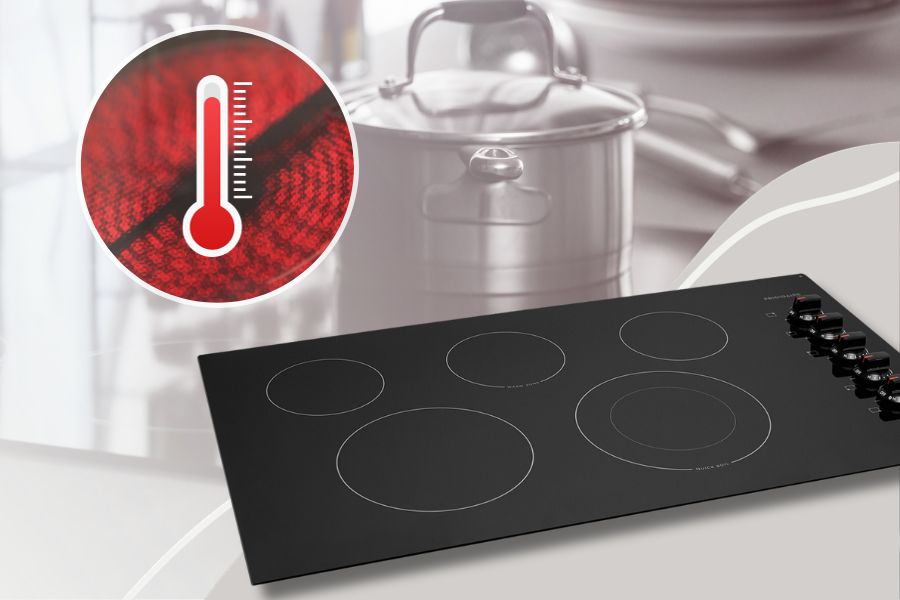Ever tried cooking the perfect steak only to end up with something less than desirable? I’ve been there too. The key to culinary success often lies in understanding your stove’s temperature range. Whether you’re using an electric stove or a gas stove, knowing how hot your burner gets can make all the difference between a seared masterpiece and a rubbery mess.
Electric stovetops and gas stoves heat differently, and the type of cookware you use can also impact the heat transfer. You don’t want to leave your pan unattended on high heat only to find your sauce has turned into a burnt disaster. From simmering soups to sautéing vegetables, the temperature of your stovetop is crucial. So, let’s dive in and find out just how hot a stove top gets and how to make the most of it for your culinary adventures.
How Hot Do Electric Stove Burners Get?
Electric stovetops can generate high temperatures, especially when the coils are in the highest setting. The small coil can reach temperatures between 500°C to 600°C(932°F to 1112°F ), while the larger coil can go up to 800°C to 900°C(1472°F to 1652°F) on the highest setting.
Factors that Affect Electric Stove Burner Temperature
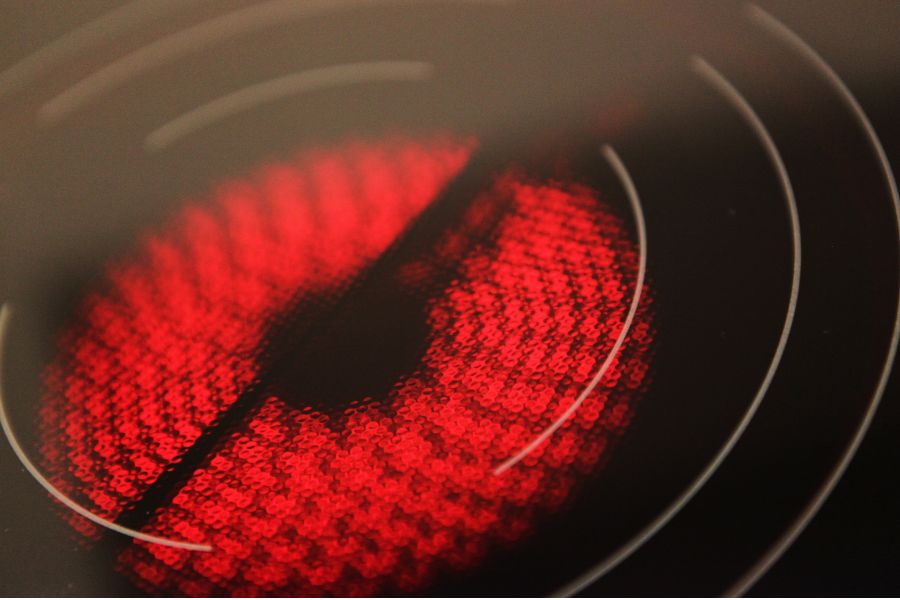
Electric stove burners are a convenient and essential appliance for many households. However, the burner’s temperature can be affected by various factors, which can impact cooking performance and safety. Understanding these factors can help you get the most out of your electric stove and cook your food more effectively.
Type of Heating Element
The type of heating element used in an electric stove burner affects its temperature range. Electric stoves can have either a coil or smooth-top heating element. Coil heating elements are made up of coiled wires, and they tend to be less expensive but may not heat evenly.
On the other hand, smooth-top heating elements are made of glass-ceramic material and provide more even heat distribution, but they are typically more expensive. The type of heating element can also affect the heat-up and cool-down time of the burner.
Wattage of The Burner
The wattage of an electric stove burner refers to the amount of power it consumes to generate heat. The higher the wattage, the higher the temperature range of the burner. Most electric stoves have burners with wattages ranging from 1,000 to 3,000 watts, with the larger burners having higher wattages. Higher-wattage burners heat up faster and reach higher temperatures, making them ideal for quickly searing or boiling water.
Cookware Material
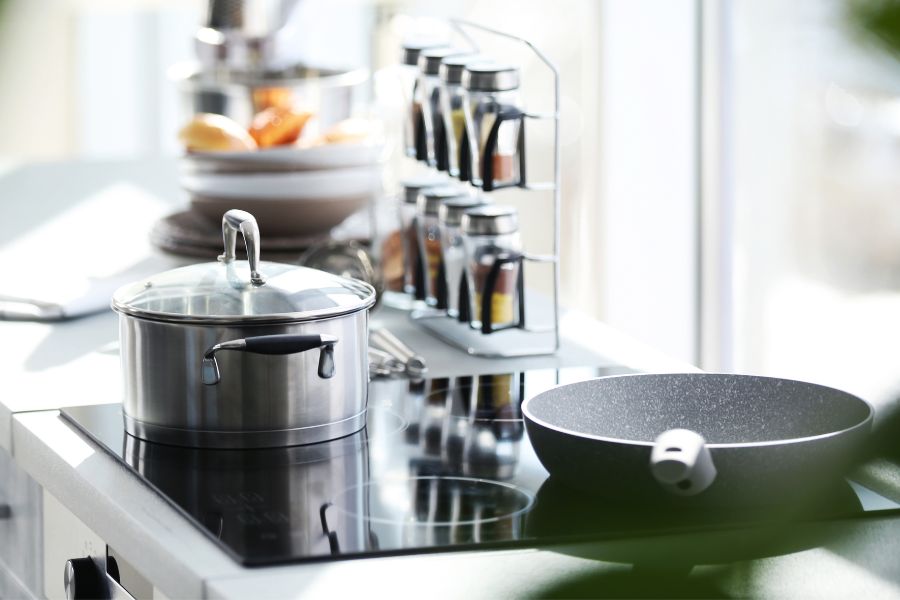
The type of material used to make the cookware placed on an electric stove burner can also affect the temperature range of the burner.
Cookware made of materials that conduct heat well, like copper and aluminum, will heat up faster and more evenly than cookware made of materials that are poor heat conductors, like stainless steel or glass. Cookware with a flat and smooth bottom will also heat up more evenly and efficiently than cookware with a warped or textured bottom.
Ambient Temperature
The temperature of the surrounding environment can also affect the temperature range of an electric stove burner. If the kitchen is hot, the burner may not get as hot as it would in a cooler environment because the heat is dissipated more easily. On the other hand, if the kitchen is cold, the burner may get hotter than usual to compensate for the cooler surroundings.
Ventilation
Proper ventilation in the kitchen is essential to maintain the temperature range of an electric stove burner. Without proper ventilation, the heat generated by the burner can become trapped in the kitchen, causing the temperature to rise and affecting the temperature range of the burner. A well-ventilated kitchen allows the heat to dissipate, maintaining the temperature range of the burner and ensuring safe cooking conditions.
Average Electric Stove Burner Temperature Range
The temperature range of electric stove burners can vary depending on the factors discussed above. However, electric stove burners generally have four heat settings: low, medium, high, and maximum. Here is a breakdown of the average temperature range for each heat setting:
Low Heat Range
The low heat range on an electric stove burner typically ranges from 120 to 150 degrees Fahrenheit (49 to 65 degrees Celsius). This heat setting is ideal for simmering sauces or keeping food warm without burning it.
Medium Heat Range
The medium heat range on an electric stove burner typically ranges from 180 to 200 degrees Fahrenheit (82 to 93 degrees Celsius). This heat setting is ideal for cooking vegetables or sautéing.
High Heat Range
The high heat range on an electric stove burner typically ranges from 260 to 300 degrees Fahrenheit (127 to 149 degrees Celsius). This heat setting is ideal for boiling water or searing meat.
Maximum Heat Range
The maximum heat range on an electric stove burner can reach up to 550 degrees Fahrenheit (288 degrees Celsius). This heat setting is ideal for tasks that require quick and intense heat, such as cooking stir-fries or searing steaks.
It is important to note that the temperature range of electric stove burners can vary depending on the type of stove and the specific burner. Therefore, checking the manufacturer’s instructions for specific temperature ranges for your electric stove burner is always recommended.
What Goes Wrong When an Electric Stove Coil Overheats?
When an electric stove coil overheats, it can cause a range of problems. Here are some of the issues that can occur:
Burned or Scorched Food
Overheating the electric stove coil can cause the food to burn or scorch, resulting in an unpleasant taste and smell.
Damage to The Cookware
Overheating can also damage the cookware, causing it to warp or become discolored.
Electrical Issues
Overheating can cause electrical issues with the stove, including damage to the heating element, wiring, or control panel.
Fire Hazard
In extreme cases, overheating the electric stove coil can create a fire hazard, which can be dangerous and cause damage to the stove and surrounding areas.
If you notice your electric stove coil is overheating, it is important to turn off the burner immediately and allow it to cool down before attempting to use it again. If the problem persists, you may need to replace the heating element or seek professional assistance to address any electrical issues with the stove.
What Causes Some Electric Stoves to Heat More Quickly Than Others?
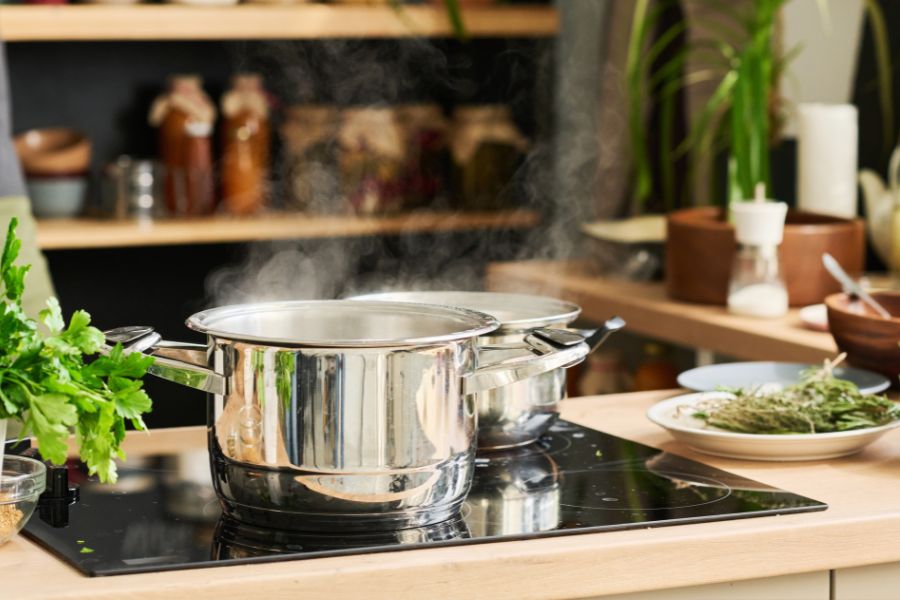
Several factors can cause some electric stoves to heat more quickly than others. Here are some of the most common reasons:
Wattage
The wattage of the electric stove burner can affect how quickly it heats up. Burners with higher wattages generally heat up faster than those with lower wattages.
Type of Heating Element
The type of heating element used in the electric stove can also impact how quickly it heats up. For example, solid disk or radiant heating elements tend to heat up faster than coiled heating elements.
Cookware Material
The material of the cookware being used can also affect how quickly the electric stove heats up. Cookware made from copper and aluminum heats up faster than those made from stainless steel or cast iron.
Voltage
The voltage supplied to the electric stove can also affect how quickly it heats up. Stoves that receive higher voltage tend to heat up faster than those with lower voltage.
Ambient Temperature
The environment’s temperature around the electric stove can also impact how quickly it heats up. Stoves in colder environments may take longer to heat up than those in warmer environments.
If you are experiencing slow heating with your electric stove, it may be due to one or more factors. Sometimes, you may need to replace the heating element or seek professional assistance to address any electrical issues with the stove.
Measuring Electric Stove Burner Temperature
It is important to measure the temperature of an electric stove burner to ensure that it is at the desired temperature for cooking. Here are some different methods of measuring electric stove burner temperature, the tools required, and the safety precautions to take:
Different Methods of Measuring Temperature
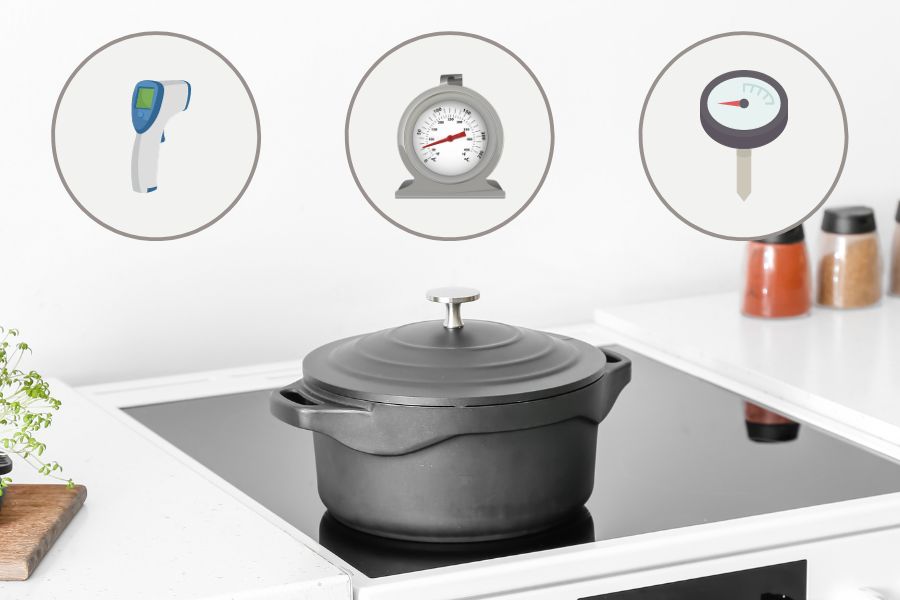
- Infrared Thermometer: This tool uses infrared technology to measure the surface temperature of the electric stove burner without making contact. It is a non-invasive method that provides accurate temperature readings.
- Oven Thermometer: This tool is placed on the surface of the electric stove burner to measure the temperature. It provides an accurate reading but requires contact with the burner.
- Contact Thermometer: This tool is placed directly into the food to measure its temperature. It is useful for ensuring that food is cooked to the desired internal temperature.
Safety Precautions to Take
When measuring electric stove burner temperature, it is essential to take the following safety precautions:
- Do not touch the electric stove burner with your bare hands, as it can be extremely hot and cause burns.
- Use heat-resistant gloves or tongs to handle the thermometer or any tools in contact with the burner.
- Ensure the electric stove burner is turned off and cooled down before measuring its temperature.
- Follow the manufacturer’s instructions for using the thermometer or any other tool to measure the electric stove burner temperature.
By taking these safety precautions and using the appropriate tools, you can accurately measure the temperature of an electric stove burner to ensure that it is at the desired temperature for safe and effective cooking.
Frequently Asked Questions
Can an Electric Stove Coil Overheat and Cause Damage?
Yes, an electric stove coil can overheat and cause a range of problems, including burned or scorched food, damage to the cookware, electrical issues with the stove, and even a fire hazard.
How Can I Prevent My Electric Stove Coil from Overheating?
To prevent your electric stove coil from overheating, make sure to use the right size cookware and keep it centered on the burner. Avoid using damaged or warped cookware, and never leave the stove unattended while cooking.
Why Is My Electric Stove Burner Heating Slowly?
There could be several reasons why your electric stove burner is heating slowly, including low wattage, a damaged or malfunctioning heating element, or issues with the stove’s electrical supply. It is best to seek professional assistance to diagnose and fix the problem.
What Safety Precautions Should I Take When Using an Electric Stove?
To safely use an electric stove, always use the right size cookware, keep the stove clean, and avoid leaving the stove unattended while cooking. Use oven mitts or pot holders to protect your hands, and never touch the stove’s heating elements while hot.
Can I Use Cast Iron Cookware on An Electric Stove?
Yes, you can use cast iron cookware on an electric stove. However, use a flat-bottomed pan to ensure even heating, and avoid dragging the cookware across the stove’s surface.
How Often Should I Clean My Electric Stove?
It is a good idea to clean your electric stove after each use to prevent food buildup and maintain its appearance. Deep cleaning should be done once a month or as needed.
Can I Leave My Electric Stove Unattended While Cooking?
No, leaving your electric stove unattended while cooking is not recommended. Always stay nearby and keep an eye on the cooking process to prevent accidents and ensure food is cooked properly.
How Hot Does an Electric Stove Get?
Electric stoves can get very hot, especially in the highest setting. A small coil on an electric stove can get as hot as 932°F to 1112°F (500°C to 600°C), while a large coil can reach 1472°F to 1652°F (800°C to 900°C). It is important to be careful when cooking on an electric stove and never to leave food unattended.
What Is the Highest Temperature Setting Left Unattended? How Hot Can an Electric Burner Get?
Suppose an electric burner is set to its highest temperature and left unattended. In that case, it can reach extremely high temperatures, potentially up to 550 degrees Fahrenheit (288 degrees Celsius) or more, depending on the model.
This poses a serious fire hazard, resulting in burned food, damaged cookware, and even electrical issues. Always monitor your cooking to prevent such risks.
How Does an Electric Cooktop Coil Differ From Other Types of Heating Elements in Terms of Heat Transfer?
Electric cooktop coils generally offer a more uneven heat distribution than smooth-top or radiant heating elements. The coil’s design can lead to hot spots, resulting in uneven cooking.
Radiant and smooth-top elements transfer heat more uniformly across the cookware, making them generally better for tasks that require even heating.
Are Electric Cooktops More Efficient at Keeping a Consistent Temperature Than Gas Stoves?
Electric cooktops are generally better at maintaining a consistent temperature over extended periods, making them ideal for recipes that require steady, low heat. Gas stoves offer quicker heat adjustments but may have slight fluctuations in temperature, which could be less ideal for certain types of cooking.
What Features Should I Look For in an Electric Range to Ensure It Can Transfer Heat Effectively for Various Cooking Needs?
When shopping for an electric range, consider models with variable wattage for different burners, as this allows for more precise heat control.
Also, look for ranges that offer different types of heating elements, such as radiant or smooth-top, which are known for effective heat transfer. Features like programmable settings can also help you maintain the ideal temperature for various cooking tasks.
How Can I Keep the Temperature Consistent When Cooking on an Electric Range, Especially for Recipes That Require Precise Heat Control?
To keep the temperature consistent on an electric range, use cookware that distributes heat evenly, such as those made from copper or aluminum. Preheat the pan before adding ingredients, and give the stove time to adjust when you change the heat settings.
Some electric ranges also have advanced features like temperature probes and programmable settings to help you maintain precise heat control.
Bottom Line
Electric stove burners can reach different temperature ranges depending on various factors, such as the type of heating element, wattage of the burner, cookware material, ambient temperature, and ventilation. It is important to understand these factors to effectively control the burner’s temperature for safe and efficient cooking.
The average temperature range for each heat setting on electric stove burners includes low, medium, high, and maximum. Measuring the temperature of the electric stove burner is also essential for ensuring it is at the desired temperature for cooking. This can be done using an infrared thermometer, an oven thermometer, or a contact thermometer.
By taking the necessary safety precautions and using the appropriate tools, one can effectively measure the temperature of the electric stove burner and achieve the desired cooking results.
Don’t hesitate to ask any further questions about electric stove burners or any other topic. As an AI language model, I am always here to assist you. Feel free to ask me anything!

